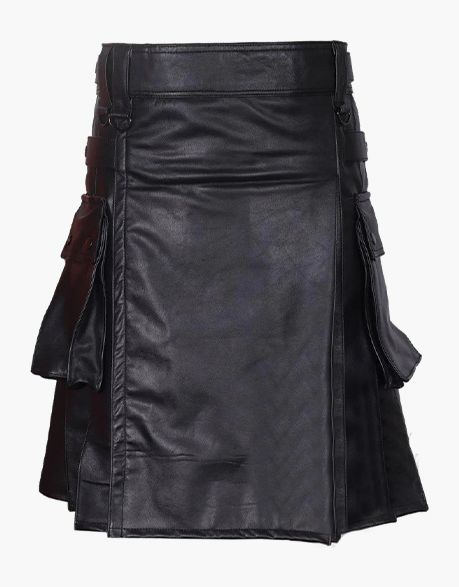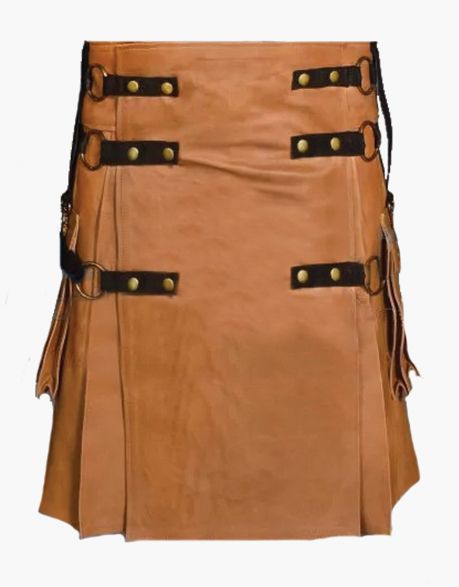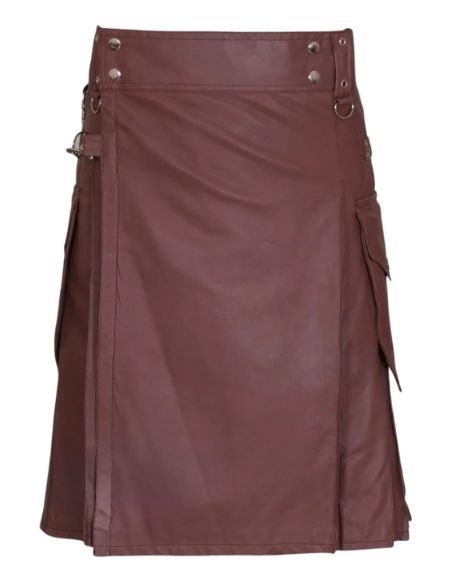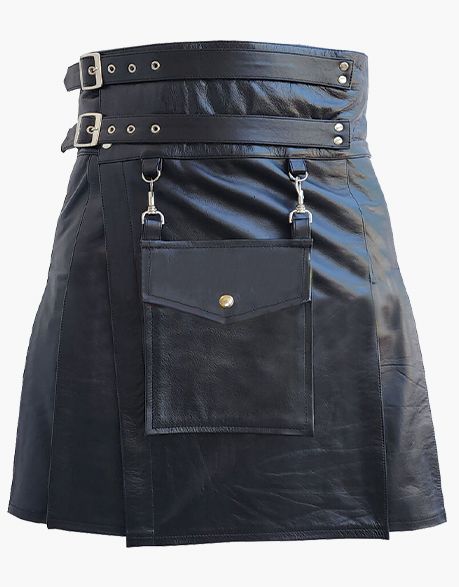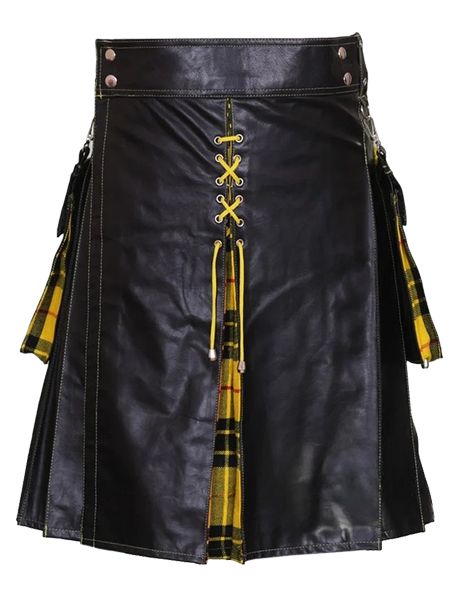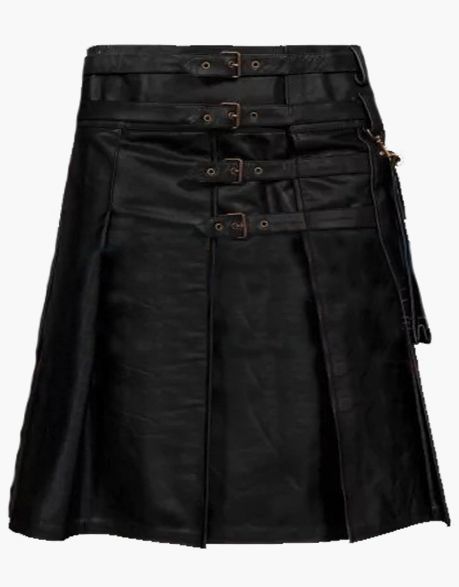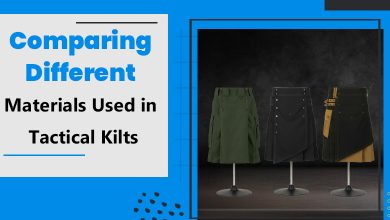Caring for Leather Kilt in American Weather Conditions

Leather kilts are a modern adaptation of traditional Scottish attire and have become popular within a few years. Today, every person who wants to be prominent in gatherings happily opts for this kilt variation. A common reason behind it is the bulkier appearance with glossy flair. Unfortunately, this specific clothing is not everyday wear while a solid reason can be its effortful maintenance, especially in the USA. This discussion aims to let Americans know about some tips for caring for leather kilts. Before we dive into these tips, let’s analyze leather and its weather sensitivities.
Table of Contents
ToggleWeather Sensitivities of Leather
Leather is one of the strongest materials that comes from animal hides. It is popular for serving many sectors today such as clothing, footwear, purses, and furnishings. In Scotland, leather’s primary identity is associated with Scottish dress and its accessories.
Despite its durability and appealing look, leather is a weather-sensitive material and pretty durable than other men’s kilts. Both environments, too hot or too cold, can harm it. Leather may grow stiff in cold temperatures and crack if it becomes too dry. When its moisture is removed by cold air, it becomes breakable. Likewise, heat and sunshine can dry leather swiftly. As a result, it loses natural oils and develops cracks or fading. Moreover, it can also shrink or alter its form.
Daily Leather Kilt Maintenance: Basics to Know

The above discussion clarifies that leather is weather sensitive and every season can impact its texture. Therefore, proper maintenance is essential to preserve its texture. Some simple tips are to keep it in a cool, dry place, away from direct sunlight and water. Some basic tips for caring for leather kilts are here.
- Use a gentle, dry microfiber cloth to wipe your kilt if it gets dust or stains.
- Minimize the exposure of kilts to the direct sunlight as possible because it reduces the likelihood of fading and drying out.
- Apply leather conditioner once a month to maintain suppleness, prevent cracking, and maintain a glossy appearance.
- Hang it on a proper kilt hanger to maintain its shape. This tip also avoids creasing the kilt.
- Try maximum to prevent it from water; if wet, dry it naturally without using any electronic heat source.
- Ensure stroking it properly in a cool, dry place using a breathable garment bag to avoid moisture.
Regional Leather Care Tips Based on U.S. Climate Zones

As you know leather products, especially kilts, are weather-sensitive and America is considered a lucky country to have different weather. Therefore, the role of leather in US climates is exceptional. Therefore, the caring requirements for leather kilts are important. Have an overview of regions in America and tips for maintaining Scottish apparel.
Humid Regions
The Southeastern Coastal Plain and the Gulf Coast are the most humid parts of America and the environment there is not leather-friendly. So, you keep a leather kilt dry, clean, and conditioned to maintain its charm and shiny appearance.
- Keep the leather supple and protect it from excess moisture.
- Clean it regularly with a moist cloth and then condition it as per requirements.
- Preserve the texture of the kilt by keeping it in a breathable garment bag in a cold, dry, and well-ventilated environment.
- A dehumidifier may help control humidity levels and stop the formation of mold and mildew.
Dry, Arid Regions
The Southwestern states of America including Arizona, Nevada, and parts of California are the most dried ones. These regions are highly identifiable for dry climates, which are not suitable for leather at all. Such an atmosphere poses the risk of becoming overly dry and brittle.
- Preserving the leather’s natural oils and avoiding cracking by conditioning it as required.
- Keep your kilt in a cool, well-ventilated sport where the temperature is neither high nor low. Ensure there is no heater or heating gadget around it.
- Maintain the shape of your garment by storing it in a breathable fabric garment bag to keep dust away and allow for adequate ventilation.
- You should handle kilts with dry hands because wet or colored objects can impact the level of natural oils and dry down the surface of the leather.
Cold and Snowy Regions
Leather kilts may suffer throughout the winter months in chilly northern locations such as Minnesota, Wisconsin, and upstate New York. The snow and cold can cause the leather to become dry, split, or stiff. Store your kilt indoors in a warm location to help preserve its condition. Keep it dry by letting it air dry if it becomes wet from salty pavements or snow. In winter, use leather conditioner more frequently to maintain its softness. For better form retention, always hang it from a broad hanger.
Leather Types Used in Kilts & Their Specific Care Needs

You may already know that there are different types of leather used in the formation of kilts. All variations have unique features. These features, thus, decide their appropriateness for occasions. So, knowing leather variations and the level of care decides their longevity.
Full-grain leather: Leather product makers consider full leather to be the most durable material. It can bear minor cracks and holds its color for an extended duration, which is why it needs less maintenance.
Top-grain leather: The next variation is top-grain leather which is the favorite choice for kilt-makers, offering several benefits over others. A normal maintenance routine might be quite sufficient.
Genuine leather: Genuine leather is not as high-quality as full-grain or top-grain leather.. Items such as kilts and others made with this material need a high level of attention.
Exotic leathers: Exotic is a form of leather derived from animals that are easy to find such as lambs and buffaloes. This variation is suitable for those who cannot afford to spend too much. It often requires more care than cowhide leather, which is mostly used to make kilts and leather sporrans.
Emergency Fixes and On-the-Go Care Tips
The routine inspection of leather kilts for wear and tear, color fading, and cracks can extend their lifespan. Ensure that emergency fixes of these problems are the top priority. A few fixes are possible at your side if you don’t have experience with it. Otherwise, consult a professional for major repairs.
Cleaning Oil Spill: If you get an oil spill or stain on your leather kilts, clean it using a damp towel. While cleaning, avoid rubbing leather; it may not cause further harm.
Minor Scratches: Wearing a leather kilt for all day increases the chance of minor scuffs and scratches. If you get it on your kilt, clean the area. Now apply a small amount of leather conditioner or oil with a soft cloth and rub it in circular motions to polish and blend the scratch.
On-the-Go Caring Tips: Prioritize removing the dust routinely using a soft brush. Moreover, keep a leather-specific cleaner and conditioner for spot cleaning and conditioning. The last step is properly storing it in a cool, dry place using a breathable bag.
In case you get major scratch or leather impacted by another material, ensure getting in touch with an expert for better treatment.
Eco-Friendly and Sustainable Leather Care Options
Leather requires a high degree of maintenance compared to other materials making kilts. Some natural and sustainable remedies may serve as eco-friendly ways to preserve it. Proper cleaning and storage are undoubtedly sustainable methods for leather care.
You can adopt some other ways to remove grime. Mix lemon in water to remove stubborn stains. Using this method too frequently can lighten the leather, so it should only be used occasionally. So be careful. Likewise, a dilution of white vinegar and water can be an effective remedy to disinfect and deodorize.
Buy Top-notch Leather Kilts at The Utility Kilt
The above discussion must have clarified that proper care is essential to increase the longevity of leather kilts. Maintenance becomes more effective if you deal with a kilt according to the weather requirements. Therefore, buying premium-quality kilts remains an essentiality. If planning to buy a leather kilt, you should consider exploring the range of “The Utility Kilt.” We are an online, US-based store, offering quality, affordability, customization, and excellent shipping policies under the same roof. Some ideal kilts, you should give thought to buying are:
FAQs About Leather Kilt Caring
Can I wear my leather kilt in the rain?
You can wear a leather kilt in the rain but precautionary measurements are essential. Leather kilts are water-resistant but to a specific context but you can waterproof it by using leather protectant spray.
How often should I condition my kilt?
It depends on your usage and the exposure of your kilt to sunlight and other harsh conditions. Therefore, experts recommend to condition it once or twice a year. The tenure can be frequent if you notice it getting dried.
What if my leather kilt starts to smell musty?
This situation usually occurs due to moisture. So, the ideal way to get rid of smell is to air out the kilt for a longer period. In the same manner, dilute baking soda and apply it lightly to the kilt. It will remove the odors.
Is there a way to restore faded or cracked leather?
It is possible to repair leather that has faded or broken. Leather dye or a color restoration chemical are good options to restore faded leather. Similarly, a leather filler and dye can repair significant fissures. Regular conditioning can fix minor fractures.
